SPIRIT & VISION
 |
 |
 |
 |
 |
 |
 |
 |
 |
Brook Andrew - - -
the space of dreams
Those who see these photographs will feel that they have wandered into someone’s dreamworld. Here are potent imaginings of bodies and landscapes, beings both human and animal, of love and desire, and of the unconscious. Indeed, it is not an overblown claim on my part to say that Brook Andrew has invented, in the suite of three photographs he calls Kalar Midday, a new space—not a colour and not merely a technique—but a space where we can imagine that dreams are held: the deep black space of unconsciousness into which our dreams flow and vault, leaping across the mind’s eye, never still and never real; the deep black space where peace and tranquility live, and which we crave. If we were to compare this deep blackness that suggests, but is not, the immense night sky, with Rothko’s work, or the darkness from which Rembrandt’s subjects peer, we would distinguish among them, saying, Brook’s is a different kind, texture, meaning of black.
These artworks tell the dream of ‘the land of the three’, Kalar Midday, a place imagined or real, I cannot tell, in Wiradjuri country. First, nestled among the branches of a Moreton Bay fig tree, a beautiful Aboriginal girl gazes at the night sky, the full moon tinting clouds in the aurora glow of fair weather to come. The moonlight glistens on her black skin and her rapturous upturned face, sparkles with starlight and draws our attention to the enchantment of the night; the pure balance of deep black space, bright full moon and her taut expectant iridescent body outlined in silver. Here is romance and longing, as melodramatic as the great myths in which the gods themselves are transformed by love.
We almost expect that
the beautiful people in the fig tree in the Kalar Midday suite could
create a mountain or a river, or even, as sometimes happens with these
originary beings, that they might be transformed into the everlasting
physical features of the landscape, sleeping forever in a hill, or a
rock, or in the moon. Gaston Bachelard (1994: 72) in The Poetics of
Space writes, ‘All great, simple images reveal a psychic state.’
His study of ‘intimate immensity’ neatly describes the realm
of daydream, dream and imagination that Brook playfully brings to bear
in his meditation on the power of Aboriginal mythology to transform
human characteristics into the gigantic effects of the supernatural
ancestors who created the mountains, the stars, and the rivers.
When we spoke on the phone in early October, Brook told me he wanted
to ‘create works that seduce people’. He said he wanted
‘to remove the idea of the ugly race,’ ‘to make a
long black landscape, a singularly beautiful, fantastical perfect landscape,’
‘to make a romance.’ Eventually, he used the terms that
might appeal to an academic: ‘representations of the Aboriginal
body in landscape stripped of history and violence.’ In my own
mind, at least, he has surpassed his goal.
References:
Bachelard, Gaston 1994 The Poetics of Space. [Translated from the French
by Maria Jolas.] Beacon Press, Boston.
From the Catalogue: Kalar Midday, 2002-03, cibachrome photographs by
Brook Andrew exhibited by Paul Greenaway, Adelaide, 2003.

Tensio
(currawongs and snake) 2002
Cibachrome
Photograph - 84.5 x 280cm
Courtesy
of the Artist
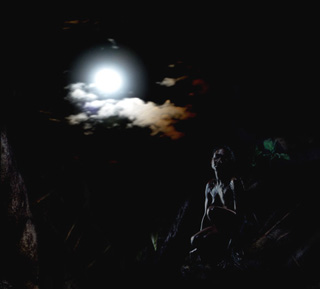
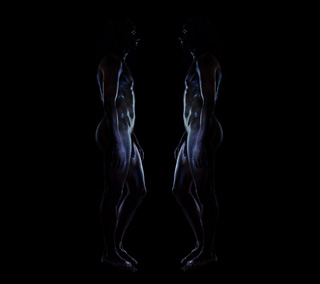
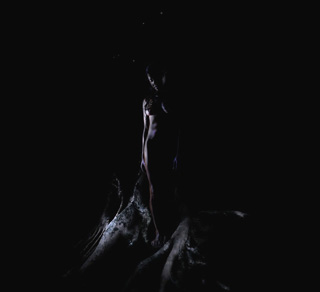
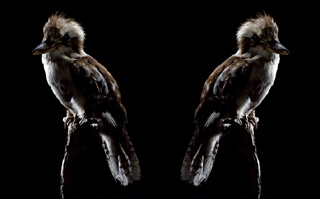
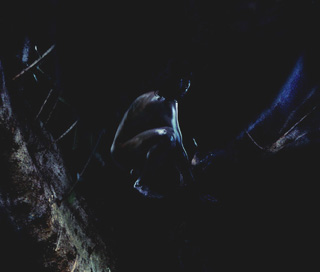
Kalar Midday 2002
Cibachrome Photographs
Courtesy of the Artist